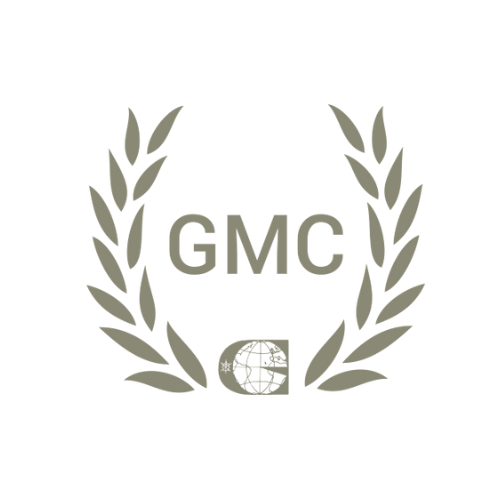Introduction
This two weeks intensive course will focus on time management, the details in job plans, creating schedules, staging material and utilising a CMMS. The Complete Course on Maintenance Planning and Scheduling features latest case studies, KPIs with sample calculations and successful outage management.
This comprehensive training course delivers the experience, advice, and know-how necessary to establish a world-class maintenance operation.
Objectives
– Explain the challenges and objectives facing maintenance organisations today.
– Demonstrate the importance of work order systems and use techniques for time estimations and priority assignments.
– Implement a preventive maintenance programme.
– Apply project management techniques to effectively manage major maintenance activities and shut-downs.
– Use capital budgeting techniques to evaluate maintenance capital expenditures.
– Implement the right KPIs to evaluate and improve performance in maintenance.
Course Outline
Day 1
The Business Case for the Benefit of Planning (Why Do Planning?)
– Company Vision.
– Why Developing Is Needed in Maintenance?
– The concept of planning (e.g., Parts and Tools).
– Increase Your Workforce Without Hiring
– Case Study: The Practical Result of Planning.
– Is Freed-Up Technicians.
– “World Class” Wrench Time.
– The Specific Benefit of Planning Calculated for Labour Only.
– The Specific Benefit of Planning Calculated beyond Labour: The Ultimate Benefit.
– Plant Staffing Level.
– Why Does This Opportunity Exist?
– Quality and Productivity: Effectiveness and Efficiency.
– Planning Mission.
– Frustration with Planning.
Day 2
Planning Principles (What Makes Planning So Frustrating and What Makes It Work?)
– The Planning Vision: The Mission.
– Principle 1: Separate Group.
– Principle 2: Focus on Future Work.
– Principle 3: Component Level Files Illustrations.
– Principle 4: Estimates Based on Planner Expertise.
– Principle 5: Recognize the Skill of the Crafts.
– Principle 6: Measure Performance with Work Sampling.
Scheduling Principles (Why Do We Have to Do Scheduling and What Makes It Work?)
– Why Maintenance Does Not Assign Enough Work?
– Advance Scheduling Is an Allocation.
– Principle 1: Plan for Lowest Required Skill Level Illustrations.
– Principle 2: Schedules and Job Priorities Are Important Illustrations.
– Case Study: New Supervisor.
– Case Study: Honouring the Schedule.
– Principle 3: Schedule from Forecast of Highest Skills Available.
– Principle 4: Schedule for Every Work Hour Available.
– Principle 5: Crew Leader Handles Current Day’s Work.
– Principle 6: Measure Performance with Schedule Compliance.
Day 3
Success Only After Dealing with Reactive Maintenance
– Proactive versus Reactive Maintenance.
– Extensive versus Minimum Maintenance.
– What Kind of Job Plan Is That!?
– Case Studies Illustrating Actual Industry Successes.
– Case Study: Electric Utility.
– Case Study: Chemical Plant.
– Case Study: Food Processing.
– Case Study: Facilities 1.
– Case Study: Facilities 2.
– Case Study: Paper Mill.
– Case Study: Wastewater Treatment Plant.
Day 4
Basic Planning
– A Day in the Life of a Maintenance Planner Work Order System.
– Planning Process.
– Work Order Form.
– Coding Work Orders.
– Using and Making a Component Level File Scoping a Job.
– Troubleshooting.
– Performance Testing or Engineering.
– Engineering Assistance or Reassignment.
– Developing Planned Level of Detail, Sketching and Drawing.
– Job Plan Template.
– Estimating Work Hours and Job Duration.
– Job Safety.
– Estimating Job Cost.
– Contracting Out Work.
– Wastewater Treatment Industry Example.
Day 5
Advance Scheduling
– Weekly Scheduling.
– Forecasting Work Hours.
– Sorting Work Orders.
– Allocating Work Orders.
– Common Sense for Interruptible and Other Work.
– Formal Weekly Schedule Meeting.
– Staging Parts and Tools.
– What to Stage?
– Where to Stage?
– Who Should Stage?
– The Process of Staging.
Daily Scheduling and Supervision
– A Day in the Life of a Maintenance Supervisor.
– Assigning Names 273 Coordinating with the Operations Group.
– Handing Out Work Orders.
– During Each Day.
– Avoiding Common Pitfalls That Wreck the Schedule.
Day 6
Forms and Resources Overview
– Forms.
– Resources.
– Component Level Files—Mini files.
– Equipment History Files (Including System Files and Mini files)
– Technical Files.
– Attachment Files 308 Vendor Files.
– Equipment Parts Lists.
– Standard Plans.
– Lube Oil Manual.
– MSDS.
– Plant Schematics.
– Rotating or Critical Spares Programme.
– Security of Files.
Day 7
The Computer in Maintenance
– A Day in the Life of a Maintenance Planner (Using a CMMS).
– The Planner Must Use the CMMS Job Plan Module.
– What Type of Computerization.
– Software Already in Use.
– Single User or Larger Network.
– Creating versus Purchasing a Commercial CMMS.
– Interfacing a CMMS with a Company Financial System.
– Benefits with the CMMS.
– Standardizing Work Processes Inventory Control.
– Information for Metrics and Reports.
– Finding Work Orders.
– Linking Information to Equipment.
– Common Database Scheduling.
– PM Generation.
– Problem Diagnosis and Root Cause Analysis Support.
– Cautions with the CMMS.
– Selection of a CMMS.
How Planning Interacts with Preventive Maintenance, Predictive Maintenance, and Project Work
– Preventive Maintenance and Planning.
– Project Work and Planning.
Day 8
Control (How Do We Control Planning Itself and What Are Associated KPIs for Planning and Overall Maintenance?)
– Key Process Indicators (KPIs).
– KPIs for Scheduling.
– KPIs for Planning.
Shutdown, Turnaround, Overhaul, and Outage Management
– Different Types of Outages.
– Accuracy of Task Estimates.
– Cycle of Improvement: The Outage Report.
– Controlling the Scope of Outages.
– Elements of the Outage Organization.
– Defining Outage Success.
Start Planning
– What Is Maintenance Planning?
– Why Do Companies Need Maintenance Planning?
– WIIFM (What’s in It for Me?)
Planning Is Just One Tool; What Are the Other Tools Needed?
– Work Order System.
– Leadership, Management, Communication, Teamwork.
– Qualified Personnel.
– Reliability Maintenance.
– Improved Work Processes.
Day 9
What to Buy and Where
– Mini file Folders.
– Mini file Labels.
– Miscellaneous Office Supplies.
– Equipment Tags.
– Recommended Tag Sizes and Colours.
– Wire to Hang Tags on Equipment Deficiency Tags.
– Shop Ticket Holders.
– Open Shelf Files.
– CMMS.
Overview of Duties for Planners and Others
– Maintenance Planner.
– Maintenance Scheduler.
– Maintenance Planning Clerk.
– Operations Coordinator or Gatekeeper.
– Maintenance Purchaser or Expediter.
– Crew Supervisor.
– Planning Supervisor.
– Maintenance Manager.
– Maintenance Planning.
– Project Manager.
– Maintenance Analyst.
Day 10
Computerized Maintenance Management Systems and Scheduling with Excel Spreadsheets
– Planning Principles versus Using a CMMS.
– Helpful Features for Planning and Scheduling.
– Types of Projects.
– Planning for a CMMS.
– Ongoing Support.
– Scheduling with Computer Spreadsheets.
– The MPSH Scheduler Excel Spreadsheet.
Establishing and Supporting a Planning Group
– Setting Up a Planning Group in a Traditional.
– Redirecting or Fine-Tuning an Existing Planning Group.
– Aids and Barriers Overview.
– Major Areas of Planning Management.
– Key Aids and Barriers.
– Examples.
Contracting Out Work
– Why Contract Out Work?
– Problems with Contracting Out Work.
– Alternative Forms of Contracting Out Work.
– Arbitration Considerations for Contracting Out Work.
– Concise Text of Missions, Principles, and Guideline.



















Leave a Comment